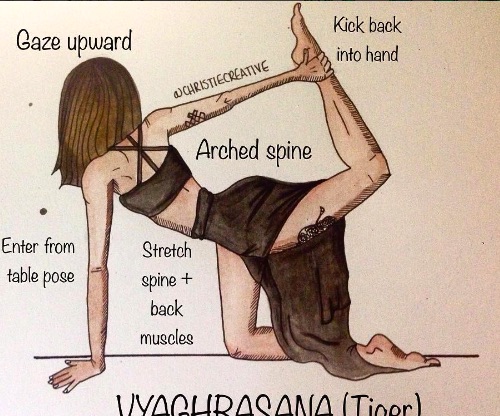The first time I took a yoga class, I hated it.
Years of the “no pain, no gain” gym motto had turned me into some sort of hyperactive hybrid hungry for speed, sweat, and suffering.
I wasn’t able to slow down my body or my mind, let alone hold a pose for longer than half a breath. Around me were a bunch of people who looked like ballet dancers, balancing their bodies on their heads, and defying the law of gravity, my patience, and my self-esteem.
As the class unfolded, I felt more and more anxious, frustrated, and emotional. Little did I know that was all part of the life-altering journey I was about to embark on.
After my first yoga experience, I didn’t hit the mat again for two years. I felt intimidated, disappointed, and confused.
“I just don’t have a yoga body,” I thought. “I’m not slim, long-limbed, or flexible. I’m strong, athletic, and muscly!”
But a few years later, in a strange turn of fate, I found myself working as a full-fledged yoga teacher.
As someone lucky enough to have encountered amazing teachers, I have learned some invaluable lessons. If you have ever felt intimidated, frustrated, or like the ugly duckling, or if you have ever hated class and felt like your body just wasn’t designed for yoga, I hope the following ideas will change your mind.
1. Yoga is a millenary Eastern practice. I am writing this in 2017 from northern Spain. We—human beings—don’t look the same way we did thousands of years ago. Our bodies and brains have, for better or worse, evolved. Our diets, our jobs, our lifestyles are different than they were 2,000 years ago, and yet many of us are trying to emulate asanas performed by yogis who have been practising since they were in their mum’s tummies. This is why it is vital we mind our own business in yoga class, don’t look around or compare ourselves to others, or try to copy what the hot girl in front of us is doing.
2. Just like there are different body types (athletic, thin, hourglass, pear), our muscles and bones—although not as visible—also look different. It is a fact that some of us have naturally more muscle mass than others, more or less body fat, and some bones are longer, thicker, or more dense than others. Bones have different shapes too; they connect to each other allowing for bigger or smaller ranges of motion. This means that when we are performing the same asana, we can look very different to the naked eye. But this doesn’t mean that we are doing anything wrong, provided that we are attempting to follow our teacher’s technical instructions.
3. Because of physical predispositions, restrictions, imbalances, or injuries, sometimes it can take months, if not years, for us to be able to dive fully into a posture. Other times, it might not be physiologically possible for us to get into a posture without injuring ourselves. So before we give up completely, or do something we may later regret, we should always ask our teachers for advice. And if a posture feels painful, uncomfortable, or just plain wrong, step out of it immediately.
4. Not everyone wants to get up to salute the sun, practice pranayama, and drink green tea every morning before heading to work. With our hectic lifestyles, not everyone can afford to do this either. A lot of us do yoga for similar and vastly different reasons, all of which are valid and great. But sometimes it is easy to get sidetracked or sucked in by the “yoga monster” and forget about our own personal objectives or reasons for doing yoga. To build a fruitful, fulfilling, and lasting routine, it is important to keep in mind why we embarked on this wonderful journey. Was it to destress, to lose weight, to feel stronger, or just to get some time to ourselves?
5. If we’re feeling upset because we can’t make our yoga class today, there’s no need to worry. We don’t have to set foot on a mat to do yoga. According to sage Patanjali’s Yoga Sutras, the physical practice part of yoga is just one of the eight limbs of yoga and is meant to help get the body ready for meditation. The goal of yoga is to still the mind through discipline, to alleviate suffering, and to merge with the divine. The eight limbs include rules of moral code and conduct, such as non-violence, non-harming, truthfulness, non-stealing, sexual restraint, non-possessiveness, purity, contentment, discipline, and spiritual studies, amongst others. The good news is that we can practice these anywhere, anytime.
~
~
Author: Gizi Aparicio
Image: @christiecreative/Instagram
Editor: Nicole Cameron
Copy Editor: Leah Sugerman
Social Editor: Catherine Monkman







Read 0 comments and reply